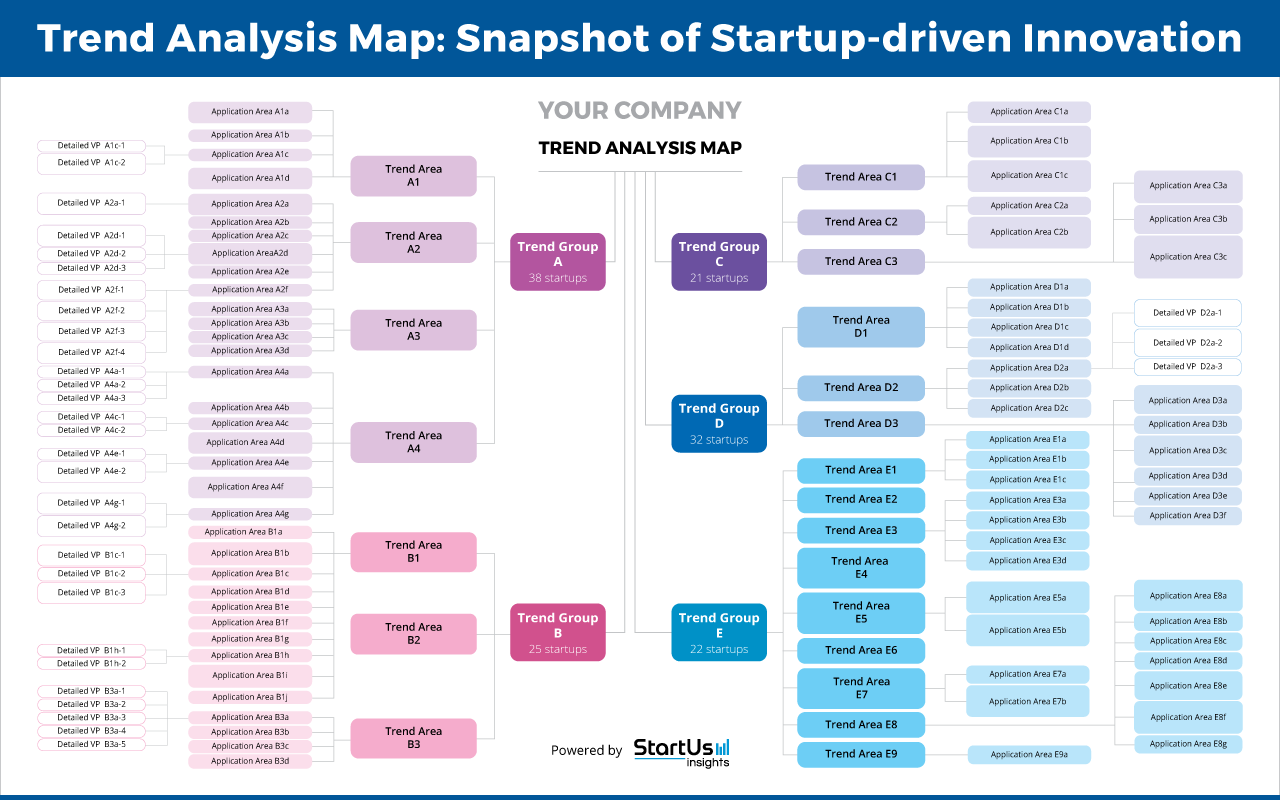New technology trends emerge at an incredible speed nowadays – but, most of them die out even more rapidly. These failed trends, which often emerge at the wrong time or in the wrong context rather than being fatally flawed, are lucky if they make it to the footnotes in the pages of history. It is near impossible to predict without uncertainty which technologies will last and which will be obsolete before enough people hear of them let alone use them. By scoping the full horizon, technology scanning allows businesses to survive in this uncertainty.
However, diversification – similar to venture capitalists betting on a large portfolio of companies – helps as it spreads out the risk. This means a single massive success is enough to cover the failures. This applies to corporations looking to invest in emerging technologies as well. But it is difficult for companies to scope a large enough number of emerging technologies to ensure that the winners are on their radar. This is where data-driven technology scanning comes in.
What is Technology Scanning?
Technology scanning is an open innovation method in which organizations regularly monitor the technology landscape. It goes beyond finding out the diversity of new and emerging technologies that startups and other companies are working on. Novel technology may be a true trailblazer but still not gain a foothold for factors beyond the control of those developing it. Technology scanning places technologies in the context of cultural influences, regulatory frameworks, and business forces that shape the industry.
This makes forecasts of which technologies will last more accurate, allowing organizations to pick winning technologies more consistently. Depending on your business needs, the optimum approach for monitoring technological evolution can be active, passive, or reactive. Actively scanning the technology horizon gives you the largest edge over the competition but can be taxing on the budget. On the other hand, passive or reactive approaches work well for companies with strong internal innovation cultures. The passive approach looks at the technology horizon without necessarily setting goals on how to incorporate new technologies. The reactive approach allows companies to be flexible but carries the risk of late technology adoption.
In the end, as is the case for any open innovation process, the goal is to maximize the likelihood of long-term success. However, technology scanning provides some immediate benefits as well.

Technology scanning provides routine analysis of the trends in the industry, allowing you to pick emerging technologies that best fit your innovation goals.
5 Benefits of Continuously Scanning Technology Trends
1. Improves Performance Benchmarking
Imagine you run a company with a highly efficient factory floor thanks to your effective adoption of lean manufacturing principles. This gives you an impressive advantage over your competition but, the advantage is not guaranteed to last. Thousands of startups globally are working on making the factory floor leaner than it has ever been. Because startups generally innovate faster than corporates and because there are so many of them, it won’t be a surprise if one of them eventually beats you.
Technology scanning allows you to keep an eye on these startups and assess the performance of their technologies. Does your tech still beat the market or is it soon to be antiquated? If one of the emerging startups provides a better-performing solution, is it worth collaborating with them? Technology scanning allows you to answer these questions. Moreover, it goes beyond comparing your set practices with disruptive solutions to benchmark internal innovation with external innovation.
2. Makes Project Management More Effective
At large companies, some technology or product projects can span anywhere from several months to a few years. These long timespans are a threat to the success of many of these projects. Between the time a project goes from conceptualization to implementation, a lot can change in the industry. If you miss out on these changes, your product will be outdated at launch. Needless to say, such products attract few customers.
This is why companies need to incorporate regular technology monitoring as an important aspect of project management. Unless it wants to risk becoming obsolete, a company should routinely evaluate its ongoing projects with changing industry standards. By highlighting features and specifications that you need to focus the most on, technology scanning significantly improves the odds of commercial success.
3. Speeds Up Alternative Discovery
Innovation is occurring at an unprecedented scale and global knowledge-sharing means the best of minds anywhere can tackle a problem, however niche or local. This is why innovations that radically alter how something is done in an industry spring up more often now. As is obvious, any of these innovations are more likely to happen outside of your organization than within, no matter the size of your organization.
Take the example of an automotive company that needs an advanced material for its manufacturing process. It either develops this material internally or sources it from a materials company. The company is betting on projects within its internal teams or its partners to improve this material even further or develop a more efficient alternative. Technology scanning, on the contrary, spreads the bets and speeds up innovation discovery.
4. Enables Accurate Technology Assessment
It is hard to project the future of technological changes or to assess the potential of a particular technology. Think of a technology that you’re developing or plan to incorporate by partnering with a startup. Should you continue to invest in the technology? In the absence of technology scanning, the answer is likely to show up in the financials. If it’s a wrong bet, it can bleed your company of resources that could have been better spent on other projects.
As highlighted above, technology scanning allows you to compare as well as benchmark your technology with alternatives. It complements technology landscaping, an open innovation process that monitors technologies critical for long-term goals. Regular technology monitoring, thus, improves the accuracy of technology assessment.
5. Promotes Cross-Fertilization of Ideas
Uncertainty in predicting the future of technologies is not about their longevity but use cases as well. Often, a product or a technology ends up being used quite differently from its intended use. Sometimes, this is driven by consumer choices, whereas market forces like new opportunities are responsible at other times. By promoting cross-fertilization of ideas, technology scanning allows companies to capitalize on such opportunities. This often happens when a company adopts technology in an adjacent industry (or a distant one, if they’re adventurous enough).
Another way cross-fertilization occurs is through collaborations that would otherwise be missed. In these collaborations, ideas don’t just flow from a startup to a large corporation. It can also be the other way round as well as a marriage of ideas between two established companies. A popular example is a long-running collaboration between Nike and Apple that continues to shape the latter’s watches. Before it happened, who would have thought of Nike as a tech company or Apple as a sports company?
Scan the Technology Landscape
Billions of data points from multiple sources make it difficult to identify the emerging technologies that will survive and have the potential to impact your business. To monitor them efficiently, you need a data-driven technology scanning solution such as Technology Landscaping. Depending on your short- and long-term innovation goals, we customize the deliverables of our technology scanning services. These deliverables include, among others:
- Trend Analysis Map: A detailed classification of emerging technology trends and their subtrends
- Trend Analysis Report: Quantitative insights into top-ranked technology trends as well as exemplary startups driving these innovations
To discover how we at StartUs Insights scan the technology horizon to future-proof your company, get in touch today!

![AI in Automotive: A Strategic Guide for Industry Leaders [2025-2030]](https://www.startus-insights.com/wp-content/uploads/2025/03/AI-in-Automotive-SharedImg-StartUs-Insights-noresize-420x236.webp)

![AI in Healthcare: A Strategic Guide for Industry Leaders [2025-2030]](https://www.startus-insights.com/wp-content/uploads/2025/03/AI-in-Healthcare-SharedImg-StartUs-Insights-noresize-420x236.webp)




